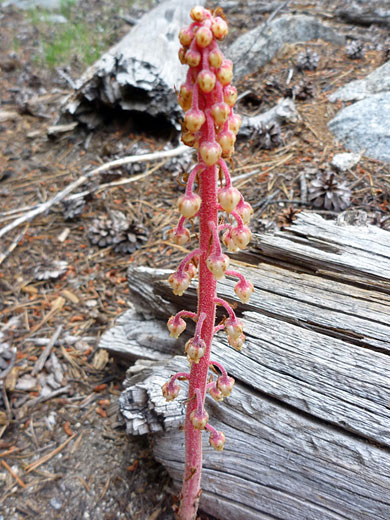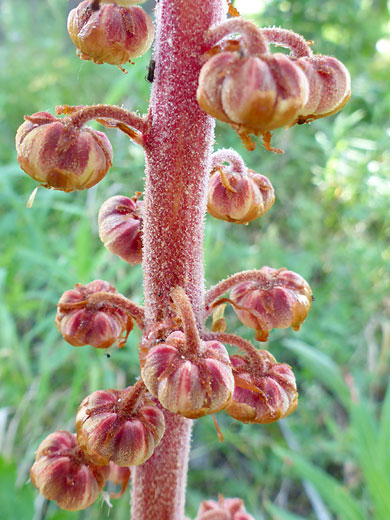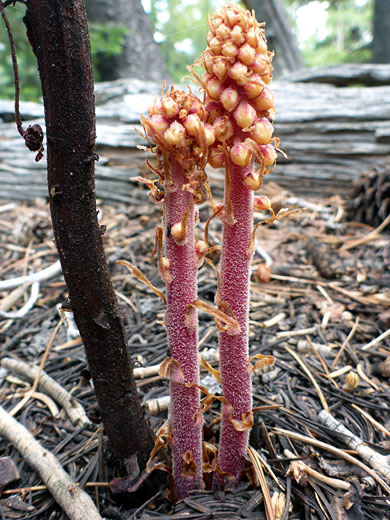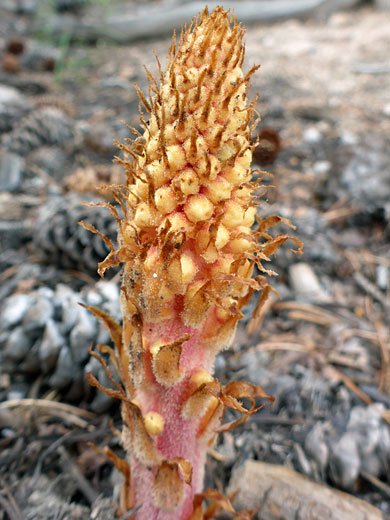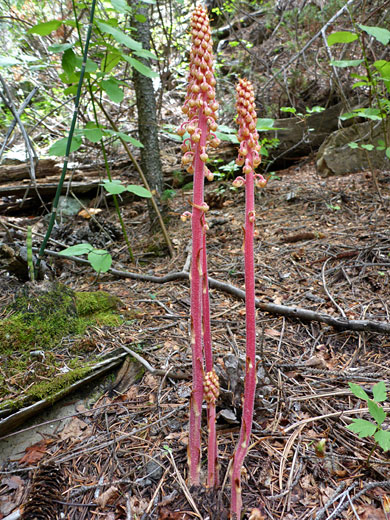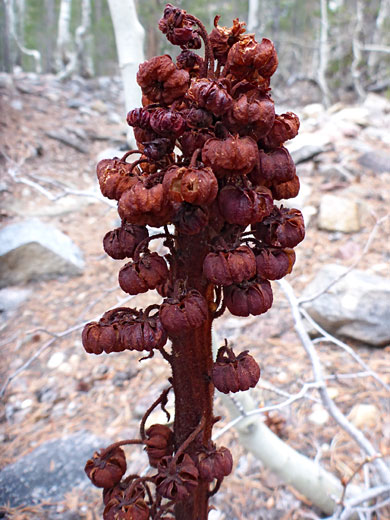Common names:
Woodland pinedrops, Albany beechdrops
Family:
Scientific name:
Pterospora andromedea
Main flower color:
Range:
Western states between the Rocky Mountains and the Pacific Ocean, plus small areas of west Texas, west Nebraska and South Dakota
Height:
Between 1 and 3 feet
Habitat:
Shady, moist places in coniferous forests, especially ponderosa pine woodland, from near sea level to 12,000 feet
Leaves:
None, only tiny scales growing against the stalk
Season:
June to August
Pterospora andromedea is one of the more unusual plants of the western forests. It lacks chlorophyll and has no leaves, producing only a tall, rigid, reddish spike bearing clusters of pendent, egg-shaped, cream-yellow flowers at intervals. Flowers are formed of five short red sepals and a rounded corolla that opens to five curved lobes, with a small opening underneath; they are covered by short hairs and a sticky substance.
Flowers are followed by red-brown, pumpkin-shaped fruits which have tissue-like appendages underneath. The plant flowers only once, and the withered, brownish stems may remain upright for several years before falling.
Flowers are followed by red-brown, pumpkin-shaped fruits which have tissue-like appendages underneath. The plant flowers only once, and the withered, brownish stems may remain upright for several years before falling.
All Contents © Copyright The American Southwest | Comments and Questions | Contribute | Site Map



